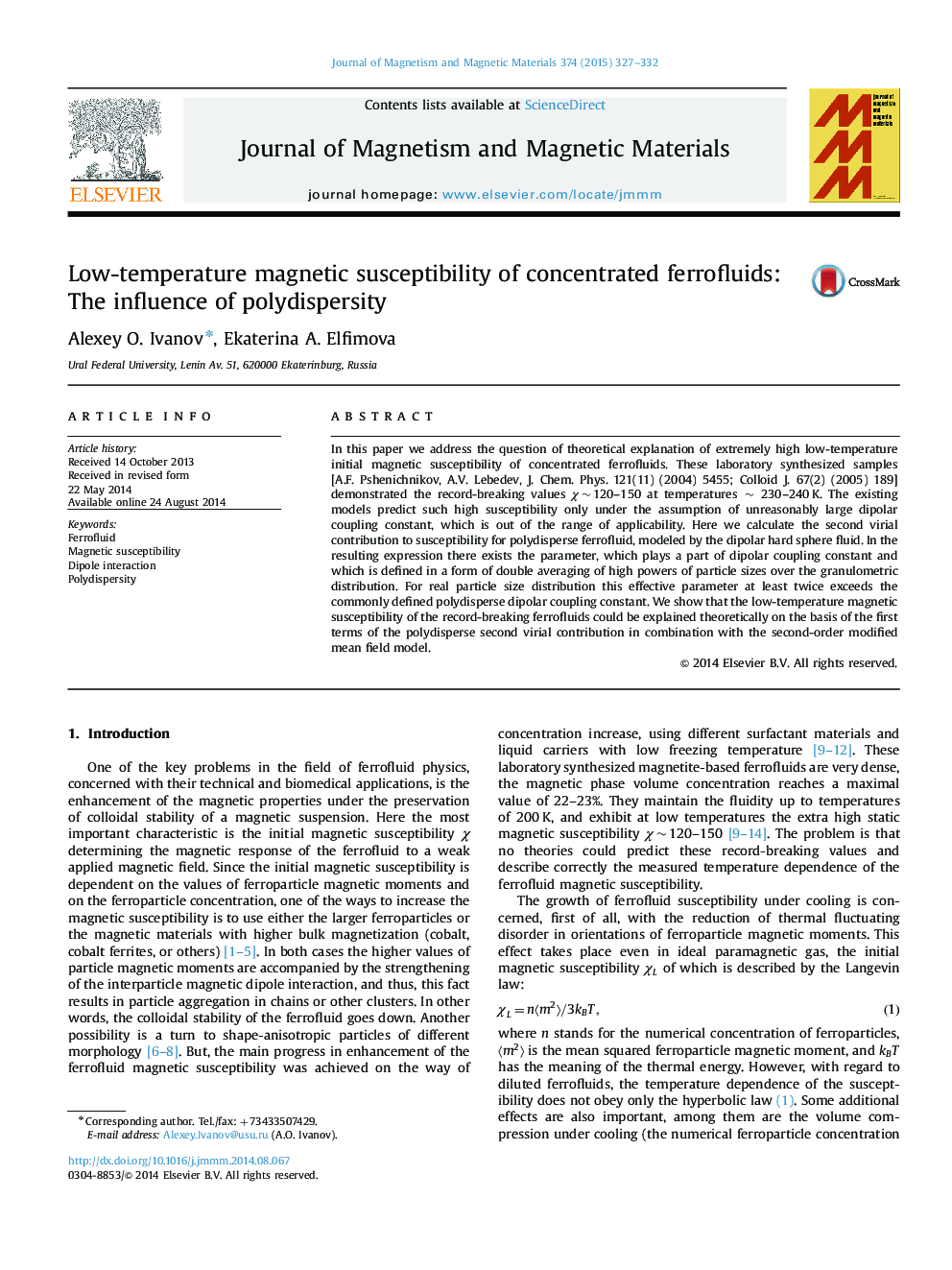| Article ID | Journal | Published Year | Pages | File Type |
|---|---|---|---|---|
| 8156574 | Journal of Magnetism and Magnetic Materials | 2015 | 6 Pages |
Abstract
In this paper we address the question of theoretical explanation of extremely high low-temperature initial magnetic susceptibility of concentrated ferrofluids. These laboratory synthesized samples [A.F. Pshenichnikov, A.V. Lebedev, J. Chem. Phys. 121(11) (2004) 5455; Colloid J. 67(2) (2005) 189] demonstrated the record-breaking values Ï~120-150 at temperatures ~ 230-240Â K. The existing models predict such high susceptibility only under the assumption of unreasonably large dipolar coupling constant, which is out of the range of applicability. Here we calculate the second virial contribution to susceptibility for polydisperse ferrofluid, modeled by the dipolar hard sphere fluid. In the resulting expression there exists the parameter, which plays a part of dipolar coupling constant and which is defined in a form of double averaging of high powers of particle sizes over the granulometric distribution. For real particle size distribution this effective parameter at least twice exceeds the commonly defined polydisperse dipolar coupling constant. We show that the low-temperature magnetic susceptibility of the record-breaking ferrofluids could be explained theoretically on the basis of the first terms of the polydisperse second virial contribution in combination with the second-order modified mean field model.
Related Topics
Physical Sciences and Engineering
Physics and Astronomy
Condensed Matter Physics
Authors
Alexey O. Ivanov, Ekaterina A. Elfimova,
